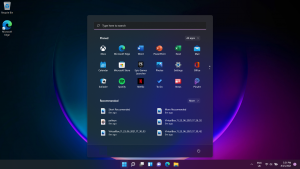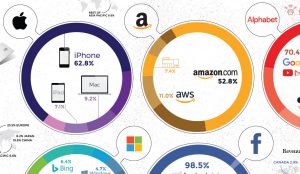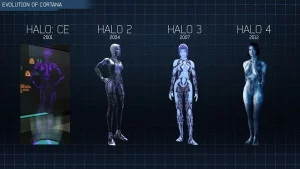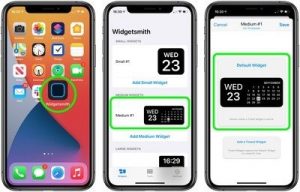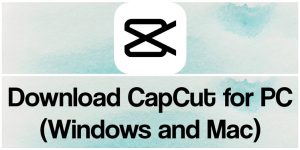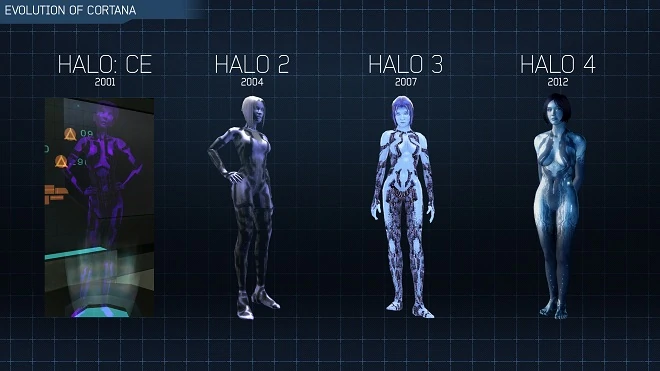
Cortana, which was designed to compete with virtual assistants like Siri, Google Now, and Alexa, has been stripped of key features and appears to be dying. However, the company’s relaunched focus on business could be the key to long-term success.
Do you recall Cortana? Microsoft’s digital assistant, which was meant to compete with Alexa, Siri, and Google Assistant by assisting you with a variety of daily chores, being built into smart speakers, assisting you in controlling your smart home, playing music, and checking the weather, news, and more?
Those days are long gone, to the point that you won’t get a response if you say “Hey Cortana” to your Windows 11 computer because the virtual assistant is turned off by default. This may lead you to believe Cortana is no longer alive.
However, this is not the case. Microsoft, in fact, has great plans for it, but they’re not the same as they were when the product was initially debuted. The firm has been unusually quiet on what it has planned for Cortana’s future, so it may have slipped your mind.
However, it hasn’t dropped off ours. We did some investigation, spoke with Microsoft’s head of Cortana development, and interviewed tech industry observers for their thoughts. The following is an in-depth look of the digital assistant’s past, present, and future.
What exactly is Cortana? An overview of the past
In a word, Microsoft Cortana is a voice-activated virtual assistant driven by artificial intelligence. It interacts with Microsoft 365 productivity products to assist users complete business tasks and is accessible as a Windows 10 and 11 app.
But that was not the case in the outset. Cortana debuted in 2014, not on desktops or laptops, but in version 8.1 of Microsoft’s ill-fated Windows Phone operating system, and was designed to answer queries, perform simple tasks, and offer recommendations in the vein of iOS’ Siri and Android’s Google Now.
During development, it was codenamed Cortana, after a female artificial intelligence character from Microsoft’s popular Halo video game series. Its official release name had not yet been selected at the time. Steve Ballmer left Microsoft in 2014, but according to former Microsoft product manager Sandeep Paruchuri, Ballmer’s “parting present” to the Cortana team was to try to rename it “Bingo.” The product team, on the other hand, waited for Ballmer to go, and when he did, incoming CEO Satya Nadella preserved the Cortana moniker and had it deployed.
The development of Cortana’s second incarnation, according to Paruchuri, is when things started to go off the tracks. More and more product managers became involved in Cortana’s development as Microsoft merged its Windows Phone team with the Windows team, he told the Big Bets newsletter in a recent interview, slowing progress with countless meetings and diluting the original product team’s focus on Cortana as a smartphone-based assistant. According to Paruchuri, Cortana was moved to Windows PCs and the Xbox game console, and the Cortana branding was eventually used to any company project involving artificial intelligence or machine learning.
Despite the upheaval, Microsoft managed to deliver Cortana for Windows 10, as well as iOS and Android devices and the Xbox game console, in 2015. Cortana was included in the Windows 10 setup process, and the digital assistant had been directly linked with the Windows Search box for several years. By speaking or typing, you could search your computer or the internet, and the results would appear in a Cortana pane. Aside than searching, you can ask Cortana factual questions or have her do things like add appointments to your calendar, send reminders, create lists, open programs on your computer, check the weather, display the latest headlines, and more.
Microsoft, on the other hand, has broader aspirations for Cortana than just computers, gaming consoles, and mobile devices. It wanted Cortana to be able to do everything Alexa could, including controlling smart homes, being built into speakers to help people manage their lives, and having a plethora of “skills” for individuals and businesses to perform tasks like scheduling meetings, searching for information, booking airline tickets, and more.
In those instances, Alexa was well ahead of Cortana. In an attempt to capitalize on Alexa’s success, Microsoft struck an agreement with Amazon in 2017 to allow Cortana to function in tandem with Alexa to take use of its features.
Even that partnership, though, was not enough to make Cortana a success. Consumers and businesses, for the most part, were uninterested. Despite Microsoft’s massive market share, it only managed to persuade one company to put Cortana inside a smart speaker: the Harmon Kardon Invoke, which was released in October 2017. It sold so few copies that the price was cut in half, from $200 to $100, not long after it was released. That didn’t help matters. According to the Canalys market research organization, 3.2 million smart speakers with Google technology were sold in the first quarter of 2018, 2.8 million speakers with Alexa incorporated in were sold, while sales of Cortana devices were too tiny to assess.
Microsoft’s mobile platform, on the other hand, was sputtering out. With a drive toward interoperability with Windows 10, the operating system was rebranded Windows 10 Mobile in early 2015, although it never gained traction with app developers or end users. Microsoft stopped developing Windows Mobile in 2017 and stopped supporting the operating system in early 2020, therefore ending the platform on which Cortana was arguably most helpful.
Microsoft proceeded to integrate Cortana with more of its own business services and productivity tools, including the Edge browser, Office 365/Microsoft 365, Skype, Teams, Dynamics 365, and Azure, despite the fact that the virtual assistant had a large installed base in Windows 10. The corporation even provided a Cortana Skills Kit for consumers and businesses to expand Cortana’s capability.
Despite this, Cortana never established a stronghold among consumers or businesses, and the virtual assistant’s fortunes continued to deteriorate. Cortana looked to be dying a thousand cuts as the decade came to an end and a new one began.
Cortana was detached from Windows Search in 2019 (meaning you had to specifically invoke Cortana to utilize it), and it was removed from the Xbox platform the following summer. Microsoft said in February 2020 that a wide range of consumer “skills” would be withdrawn from Cortana, including music and home management, as the assistant was recast as “a personal productivity assistant in Microsoft 365.”
Cortana was totally isolated from Windows Search in the subsequent Windows 10 release, and now runs as a distinct app. Harmon Kardon disabled Cortana from its Invoke speaker in March 2021, via a firmware upgrade that affected both new and existing speakers. Microsoft then terminated its iOS and Android apps at the end of the month.
Microsoft also appeared to be unconcerned with the quality and use of the information Cortana supplied when a question was posed. In August 2021, a Computerworld investigation discovered that a year and a half after the pandemic began, Cortana refused to offer even the most basic health information regarding COVID-19, or to dispel misinformation about the virus. Cortana refused to answer questions on whether masks could guard against COVID, whether COVID vaccines worked, or whether COVID vaccines implant microchips in individuals, replying only, “I’m sorry but I can’t help with that” or anything like. Much of that hasn’t been repaired six months later.
Given Microsoft’s apparent marginalization of Cortana in recent years, it’s not surprise that when the firm introduced Windows 11 in October 2021, it turned it off by default. However, if you’re prepared to do some research and customizing, you can switch it back on.
This gets us to the present day. When compared to Microsoft’s original goals for Cortana, it appears to have been weakened, with many of its features removed. Cortana’s rebirth, however, has set the ground for it to become an indispensable business tool, according to Microsoft.
How to utilize Cortana now — and in the future
Looking at the background of the executive in charge of Cortana’s development, Microsoft corporate vice president Ashok Kuppusamy, who has spent his entire 25-year career at the company working on productivity software, starting with Office, then moving on to SharePoint, Enterprise Search, and, just before Cortana, productivity features for Outlook and Teams, provides one clue to Cortana’s future.
Kuppusamy is adamant about what Cortana is now: a personal productivity assistant for Outlook and Teams. And what about the future? There are no great plans in place to control smart homes, play music, or perform other related activities. Starting with those two products, Cortana will be laser-focused on helping users work better and smarter with Microsoft productivity software.
“Our strategy is really customer-driven,” he explains. Customers, according to Microsoft, “want a personal productivity assistant to support them primarily in the areas of time management, meeting aid, and communication assistance.”
People are overloaded by items they need to read, files they need to find, people they need to contact, and meetings they need to prepare for and attend throughout the day, he adds. “This hybrid work model, where virtually everything is computerized,” he argues, “has given us all information overload.” “I believe that people need a productivity assistant to help them navigate through all of it.”
In practice, what does this mean? It all starts with meeting planning and attendance. If you have a meeting booked in Outlook, for example, you may tell Cortana, “Join my next meeting,” rather than opening Outlook, finding the appointment you want to attend, opening it, and pressing the “Join” button.
If you say, “Schedule a meeting with my direct reports, Wednesday at 9 a.m.,” Cortana will locate your direct reporters and schedule a meeting for that day and time. The scheduling is done through voice dialogs, with Cortana proposing times that might work, and you asking Cortana which time to pick, and so on.
To utilize Kuppusamy’s example, you can use Cortana for higher-level operations like filtering and searching through messages and email by saying, “Show me correspondence from [Microsoft CEO] Nadella concerning Cortana.”
“Cortana is a native component of productivity products, like Microsoft Teams, Outlook, Microsoft ToDo, and more,” a Microsoft official said. It is not necessary to activate Cortana by name in productivity programs; instead, pick the microphone in those apps and invoke the appropriate skill — for example, ‘Send an email to Jan.'”
The power of Cortana is most apparent in the Outlook mobile app, where it does even more, such as discovering relevant documents for you and allowing you to do tasks using natural-language commands like “Send an email to Allison and her boss informing them that I’m running late.” In the Outlook mobile app, Cortana will also read to you what it judges to be the most significant of your recent receiving emails.
Cortana now integrates with Teams, allowing you to do things like join and end Teams meetings, as well as add participants to meetings. By utilizing AI, it will also assist you in finding content relevant to your meetings in Teams.
These may appear to be simple jobs, but for Kuppusamy, simplicity is a virtue. They aren’t particularly showy, but they are examples of Cortana making people’s lives easier at work. He avoids overpromising and underdelivering. In fact, he claims that a big part of Microsoft’s current challenge is ensuring sure people understand what Cortana can and can’t accomplish.
He says, “We want to be humble and teach people about what voice works well for and what voice may not work so well for.” “We’re not attempting to replace the graphical user interface.” We simply believe that natural language interfaces are useful for specific jobs.”
In fact, he stressed several times throughout his discussion of Cortana’s future that Microsoft had to be “humble,” a word rarely if ever used when tech titans like Microsoft discuss product ambitions. It underlines Microsoft’s strict focus on Cortana as a productivity boost for a few of clearly defined everyday tasks, rather than as a do-it-all voice assistant.
Kuppusamy also wants to moderate expectations about Cortana’s ability to interpret the commands that users give it. People will need to be schooled to some level on what Cortana can and can’t understand or do, as well as how to ask for tasks to be completed, he says.
Microsoft has refused to comment on Cortana’s future ambitions. “You will continue to see us establish Cortana across a number of high-value productivity scenarios, such as communications, catch-up, search, and time management,” a spokesman added. “Embedded intelligence will give suggested responses [and] smart actions,” says the company. In addition, the business claims it would work with developers to help them “create tailored, intelligent experiences.”
What’s in store for Cortana in the future?
Regardless of Microsoft’s long-term goals for Cortana, analysts believe the program will face hurdles in the short term. Cortana hasn’t been able to compete with Apple’s Siri or Amazon’s Alexa, according to Angela Ashenden, principal analyst at CCS Insight. “It’s a result of Microsoft’s lack of customer focus compared to Apple and Amazon, but it’s also because the concept of a personal assistant in laptops has never taken off as it has on smartphones or smart speakers.” “Blending Cortana with Windows search didn’t help either.”
Cortana will “take a back seat in the Windows user experience,” she adds, but “we’ll see the technology reemerge in tools like Microsoft Teams in the future as part of the company’s productivity solutions,” she predicts. This is exactly what Kuppusamy intended.
Will McKeon-White, a Forrester analyst, is a firm believer in the use of voice assistants to boost productivity by making a number of jobs easier to do. “I believe it has the potential to alter how people perform their work,” he says.
However, because Cortana had so many issues in its early versions, McKeon-White believes Microsoft would have a difficult time convincing consumers to accept it as a productivity booster.
“The Cortana brand didn’t have a lot of traction with individuals or businesses,” he explains. “Response and processing requests were slow. Because of the way Cortana worked during Windows 10 startup, many IT professionals despise her. Providing a hundred laptops and hearing ‘Hi, I’m Cortana!’ at maximum volume for a whole day is enough to drive anyone insane. As a result, some inadvertent brand damage occurred.”
Furthermore, he claims that in Windows 10, users were perplexed by the distinction between Cortana and Windows Search, which may make them even more hesitant to try Cortana again.
That isn’t to say he doesn’t believe it can succeed. “They just need to modify how it works and do more to improve it,” he says, citing a slightly higher recognition rate [of spoken orders] as an example.
So, what does Cortana’s future hold? Microsoft has narrowed the scope of the product and is clearly positioning it as an add-on to its Microsoft 365 productivity suite. It will not be a consumer product for the foreseeable future – and possibly forever.
Microsoft still has to persuade customers and businesses to give the digital assistant another chance after several years of failure. However, if Microsoft can make Cortana truly useful, and if Cortana significantly improves productivity, the product may be revived.
This necessitates Microsoft improving Cortana’s speech recognition rate and integrating it with more significant productivity tools than Teams and Outlook, particularly the remainder of Microsoft 365. Microsoft will also have to entice individuals back who were turned off by Cortana’s flaws the first time around. As a result, we’ll have to wait a long to see if the business succeeds.


